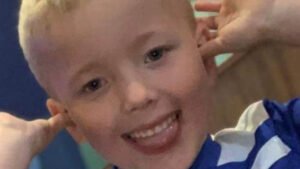Today, the National Child Safeguarding Panel have published their review into the deaths of Arthur Labinjo-Hughes and Star Hobson. This is the first national review into individual cases under the new review system and reflects the seriousness of what happened to Arthur and Star. In responding to these reviews, these children’s lives are my first thought: these were bright, happy children with their whole lives ahead of them. They were tortured and killed. What happened to Star and Arthur is the fault of the perpetrators, whose evil is almost impossible to comprehend. But crimes of this magnitude are not something we can or should accept, however rare. Moreover, as the Review lays out the chronology of service involvement in the lives of these children, it is impossible to ignore the multiple opportunities that were missed to intervene, the multiple times agencies could, and should, have done more to save both of these precious children. They were failed.
The Review has focused on what happened to Arthur and Star prior to their deaths, how child safeguarding agencies were involved in their lives, and how the voices of the wider family were lost in a system which was not acting sufficiently cohesively. It outlines a multi-agency child safeguarding system which is fractured, fragmented and reactive; and where effective ‘multi-agency working’ is believed in as a principle, but rarely realised in practice, with effective information sharing particularly problematic. These were crimes that happened because the concerns of wider families and some professionals went unheeded. We have to respond and we have to strive for a child protection system that can protect every child.
The Review makes a series of recommendations. Several of these focus on improving the structures which bring together different agencies, and help ensure that the most serious cases are responded to appropriately. There are two which I think are particularly important:
- Strengthening safeguarding by bringing education (schools) into safeguarding partnerships
I have been calling for some time for schools to have a statutory role as equal players in safeguarding partnerships. Schools have a vital role to play in these partnerships, given they are seeing children everyday, and can bring additional insiqhts and data on vulnerable young people. - Improve information sharing across the child safeguarding system
As the Review highlights, problems with information sharing have been raised in every national child protection review and inquiry going as far back as 1973. A diffusion of responsibility once data is shared, alongside risk aversion and a lack of clarity about GDPR regulations have been cited in the Review as key issues which need addressing. My Office has been exploring how data sharing in child safeguarding settings can be improved, with the aim of creating a more integrated system where practitioners have the skills and knowledge to analyse the information they receive, and have the confidence to share information correctly.
In addition to this specific, structural recommendations, I welcome the Review’s focus on culture and leadership to create systems in which professionals are supported to exercise their professional curiosity, they are challenged to ensure that everything is considered and they are helped to understand the lives of the children they are supporting. The Review concludes:
“Underpinning these issues, is the need for leaders to have a powerful enabling impact on child protection practice, creating and protecting the optimum organisational conditions for undertaking this complex work”
This is vital, but there is no easy fix. We need to work to achieve effective local systems and structures, in which children are heard and professionals are empowered. Getting this right takes determination, innovation and vision. It is hard work, and it will require relentless focus nationally and locally. But it is nothing less than what children deserve, and what we all need to redouble our commitment to if we are to minimise the chance of this happening again.






